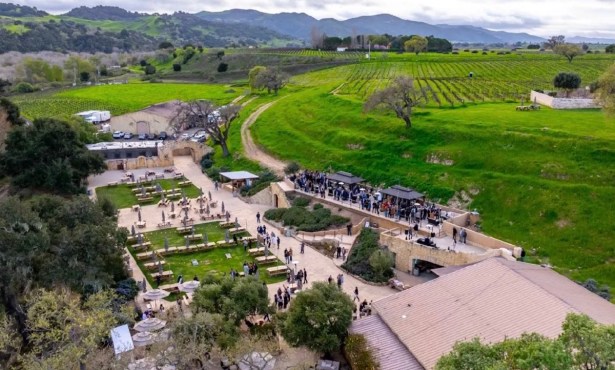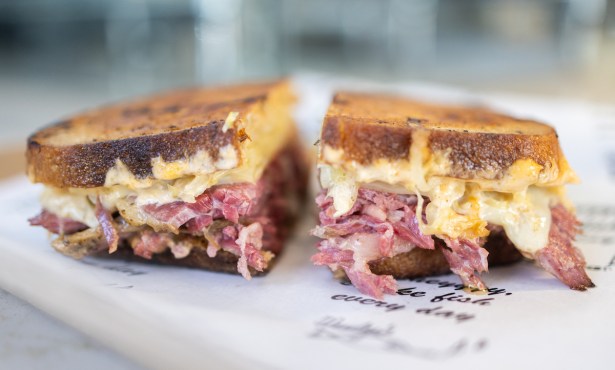Vertical Beers
The Science and Experience of Aging Ale, Via a Bigfoot Tasting
Humankind seeks to understand its world through, perhaps more than anything else, analysis of the past. People sift through libraries, read books, dig underground, drill beneath the sea, study marine fossils on mountaintops, and stare deep into the past eternities of the stars.
But some scientists collect data by drinking beer, and almost no beer-drinking experience is more profoundly telling than a vertical tasting. In a vertical, one samples multiple vintages of the same beer, side-by-side at one sitting, to gain a snapshot glimpse of the beer’s lifespan and the changes that occur from year to year. Barleywines, imperial stouts, bocks, dubbels, trippels, and other high-alcohol styles are best suited for vertical tastings. Such beers not only endure the passage of time in a drinkable way but can develop, mature, and improve until their peak. Some may evolve for ages. Charles Papazian, author and brilliant beer nerd, wrote in his book Microbrewed Adventures of tasting European meads and ales that had lain patiently in monastery cellars, through dust, damp, and dark, for more than 100 years. They were complex and marvelous, he noted, if completely flat, and though his were not vertical tastings, Papazian’s anecdotes reveal the potential for good beer to live long and prosper.
Alas, tasting these gray-bearded wonders isn’t easy. Old beers are not widely available anywhere, as the art of aging brews is relatively new. Even the venerable Firestone Walker Brewing Company has nothing older than three years, and brewmaster Matt Brynildson suggests that home beer geeks age their own, under a few guidelines: Keep the beer in a cool, dark place, between 50 and 60 degrees Fahrenheit. Unlike wine, corked beer bottles should be stored upright; if stored sideways, beware of stirring up the sediment as you pour the beer. Lastly, Brynildson recommends sour Brettanomyces-fermented beers as excellent candidates for the cellar.
Recently, The Independent had the good fortune to sample four vintages of Sierra Nevada’s illustrious barleywine, the famously, notoriously bitter 9.6-percent ABV Bigfoot Ale. We lined them up-the 2009, 2006, 2003, and 2000-and poured each into its own respective snifter. We began on the surface with the 2009. A sniff suggested fresh guava, other tropical fruits, and citrus aromas. Grapefruit and bitter rind dominated the taste, with sweet maltiness following close behind. This was Bigfoot in its classic youth: a ferocious battle between the burning, stinging alpha acids and the brutishly strong malt. The lingering impression, though, is of an immature, underdeveloped beer.
Further excavation drew us to the 2006 and, at three years of age, Bigfoot had grown. The fresh vibrancy of the hops had all but vanished; gone were the tropical fruits and grapefruit rind, though the bitterness persisted in a dull, mouth-numbing fashion-remnants of the once-flowery hops. The malt character had meanwhile grown thicker, stickier, and fudgier, accented by bitter flavors of black chocolate.
We drilled deeper into the beer strata and struck the 2003. Here, chemical interplay had taken a dramatic effect. The beer still exuded thick and creamy smells of malt, toffee, and some intense Tootsie Roll, but more surprising was a developing tartness. Sticky dates, fermented prunes, and a note of engine oil complicated the beer in a lovely way, and this vintage represented the height of the Bigfoot monarchy.
At last we arrived at the 2000. Brewed in a long-forgotten era, this beer was made when green was just a color, the world did not know a Barack Obama, U2 was still recording “Beautiful Day,” and the Trade Towers still stood. It had since lain patiently in the basement of time for nine years. It poured thick and sticky, clouded by heavy sediment. New and exciting flavors had emerged; the sourness from the previous vintage had developed into a pronounced bourbon-barrel tartness. The malty backbone was as firm as ever, and the weight of the beer still hit like a truck. Funny how one can taste colors, and in this beer there was no black. It tasted brown; of brown bourbon, brown barrels, brown fudge, brown toffee, and brown dates.
Sierra Nevada’s Senior Research Analyst Thomas Pinto Nielsen explains some of the changes that overcome a beer in the cellar. First, the hop oils and alpha acids, which give beer its bite, deteriorate rapidly after bottling, and the hops’ aromatics fade. Meanwhile, substituted furans convene and begin interacting, creating the flavor notes usually described as “sherry-like.” Strecker aldehyde also begins to build throughout the years, lending a potato-paper-like scent and taste. If the beer is subjected to temperatures above 80 degrees Fahrenheit, a mushroom character can appear.
Nielsen once tasted a 15-year-old Bigfoot. The beer’s notorious hops, he says, had vanished, and it was “smooth and velvety.” The sherry notes, however-so strong in the 10-year-old we sampled-had come and gone. Nielsen cannot explain the chemistry of their disappearance, and while we’ve sent people to the moon, fully understanding beer sensory evolution remains a task still beyond humankind.



